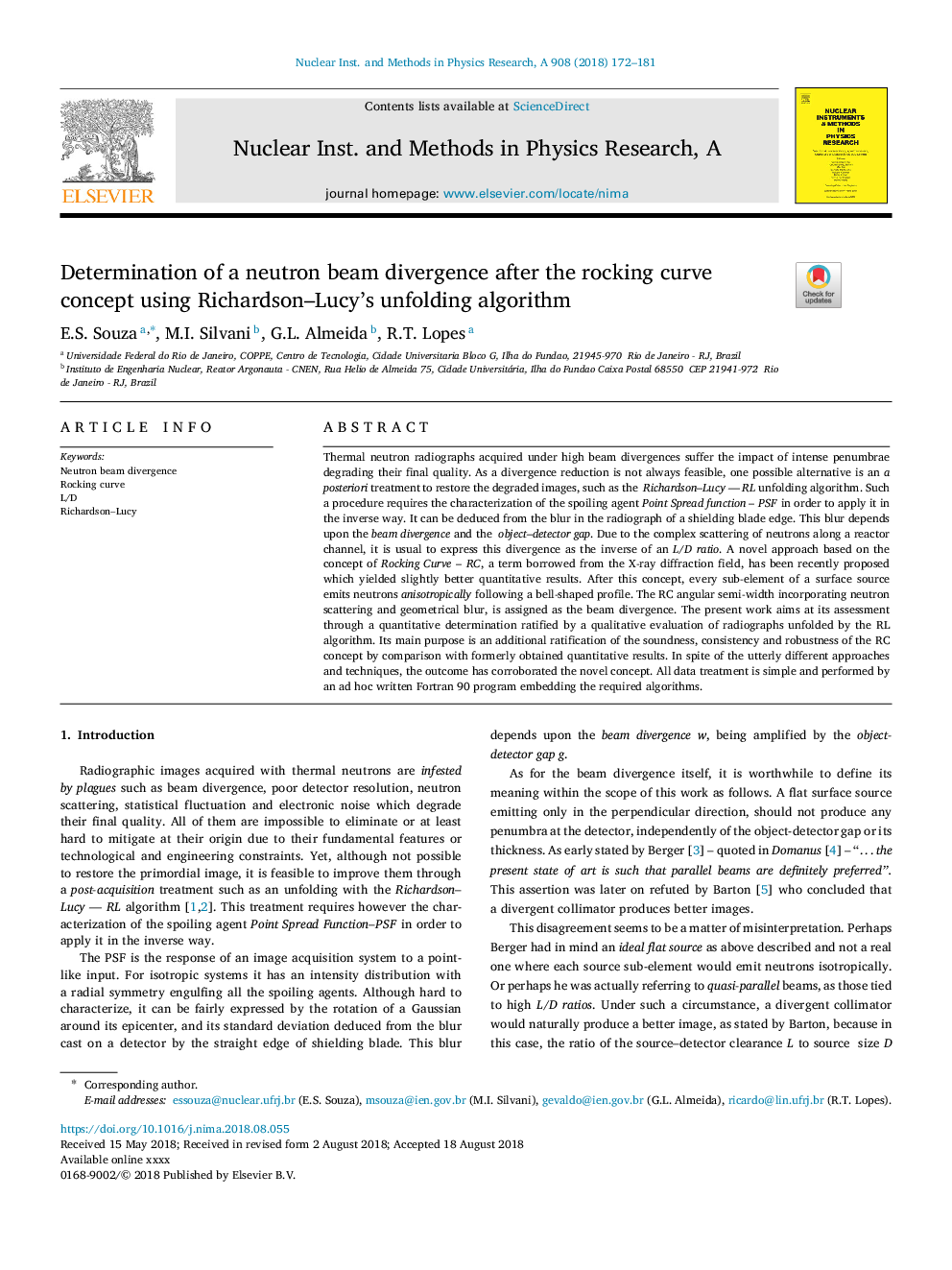| Article ID | Journal | Published Year | Pages | File Type |
|---|---|---|---|---|
| 8955842 | Nuclear Instruments and Methods in Physics Research Section A: Accelerators, Spectrometers, Detectors and Associated Equipment | 2018 | 10 Pages |
Abstract
Thermal neutron radiographs acquired under high beam divergences suffer the impact of intense penumbrae degrading their final quality. As a divergence reduction is not always feasible, one possible alternative is an a posteriori treatment to restore the degraded images, such as the Richardson-Lucy - RL unfolding algorithm. Such a procedure requires the characterization of the spoiling agent Point Spread function - PSF in order to apply it in the inverse way. It can be deduced from the blur in the radiograph of a shielding blade edge. This blur depends upon the beam divergence and the object-detector gap. Due to the complex scattering of neutrons along a reactor channel, it is usual to express this divergence as the inverse of an L/D ratio. A novel approach based on the concept of Rocking Curve - RC, a term borrowed from the X-ray diffraction field, has been recently proposed which yielded slightly better quantitative results. After this concept, every sub-element of a surface source emits neutrons anisotropically following a bell-shaped profile. The RC angular semi-width incorporating neutron scattering and geometrical blur, is assigned as the beam divergence. The present work aims at its assessment through a quantitative determination ratified by a qualitative evaluation of radiographs unfolded by the RL algorithm. Its main purpose is an additional ratification of the soundness, consistency and robustness of the RC concept by comparison with formerly obtained quantitative results. In spite of the utterly different approaches and techniques, the outcome has corroborated the novel concept. All data treatment is simple and performed by an ad hoc written Fortran 90 program embedding the required algorithms.
Keywords
Related Topics
Physical Sciences and Engineering
Physics and Astronomy
Instrumentation
Authors
E.S. Souza, M.I. Silvani, G.L. Almeida, R.T. Lopes,
